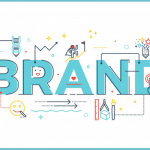Incentive programs have long been a cornerstone for driving employee engagement and motivation. After all, according to Gallup’s research, highly engaged teams show 21% greater profitability compared to disengaged teams.
But while large enterprises have mastered the art of creating sophisticated, behavior-driven reward systems, mid-market companies often struggle to keep pace. For many of these organizations, adopting strategies from larger firms could provide a fresh way to enhance loyalty and performance among employees.
So, what lessons can mid-market companies take from enterprise approaches, especially when it comes to designing incentive programs that actually work? Serial entrepreneur Kris Duggan says that mid-market companies can enhance employee engagement by adopting enterprise strategies like gamification, personalized rewards, and data-driven metrics.
Gamification: The Foundation of Modern Incentives
Gamification—the process of applying game-like elements to non-game environments—has been a game-changer in workplace incentive programs. In fact, according to a recent report by MarketsandMarkets, “the gamification market size is projected to grow from USD 9.1 billion in 2020 to USD 30.7 billion by 2025.”
Consider too that, 78% of respondents to a survey by TalentLMS said that “gamification in the recruiting process would make a company more desirable.”
Enterprise companies like Lyft have successfully incorporated gamified elements into their reward structures, driving participation and loyalty among employees. They’ve made it more than just a point-based system. Employees can achieve different “status levels” based on performance metrics, like the number of tasks completed or goals met within a certain time frame. As employees level up, they unlock better rewards, keeping engagement high and incentivizing continuous effort.
Mid-market companies can take a cue from these enterprise tactics by introducing similar gamified systems. For example, setting up a tiered structure—where employees progress from bronze to silver to gold—creates a clear, motivating path for improvement. At each level, employees unlock increasingly valuable rewards, such as gift cards, company swag, or other perks. Gamification is an easy-to-implement solution that builds a sense of achievement and drives performance.
Designing an Incentive Program that Changes Behavior
One of the most effective ways to structure an incentive program is to align it with your company’s core values. Managers can allocate a budget to reward employees whenever their behavior reflects those values. This creates a direct link between actions and rewards, helping to reinforce desired behavior across the workforce.
So, for example, instead of focusing solely on hitting sales targets or completing tasks, reward employees for embodying key values like teamwork, innovation, or customer service. Companies can give managers the freedom to recognize employees with points or bonuses that can be redeemed for rewards, which in turn helps solidify the company culture.
Flexibility Matters: Personalizing Rewards
When it comes to reward programs, flexibility is key. Large companies often allow employees to choose their own rewards, giving them the freedom to pick what suits their personal preferences. This approach is effective because not everyone is motivated by the same incentives. While some may appreciate a gift card, others might prefer cash or the ability to exchange their points for something more practical, like company-branded items or even vacation days.
Mid-market companies can apply this lesson by offering a variety of rewards and allowing employees to select what’s most valuable to them. This can range from experiential rewards, like event tickets or trips, to more practical options like tech gadgets or cash bonuses. The idea is to personalize the incentive experience, ensuring each employee feels the rewards align with their own motivations. Personalization not only increases participation but can also lead to higher overall job satisfaction.
Scaling Incentive Programs for Mid-Market Companies
Scaling an incentive program can be tough, especially for companies that don’t have the same resources as a large enterprise. But with thoughtful planning, even mid-market businesses can build programs that drive engagement and don’t break the bank. The key is to focus on operational efficiency while maintaining an element of flexibility.
One way mid-market companies can scale their incentive programs is by automating certain aspects of the system. For example, many enterprise companies have built seamless portals where employees can view, track, and redeem their rewards. This automation not only makes it easier for employees to participate but also reduces the administrative burden on the company.
Mid-market companies might not have the resources to build complex systems right away, but they can start by using simple digital tools or third-party platforms to manage rewards. This allows the program to grow as the company scales without adding unnecessary strain on the HR or operations teams.
Metrics Matter: Measuring the Success of Incentive Programs
How do you know if your incentive program is working? Large enterprises rely heavily on data to evaluate the success of their reward systems. Companies like Lyft and Schneider Electric track performance metrics such as completion rates, employee retention, and even Net Promoter Scores (NPS) to assess the effectiveness of their programs.
Mid-market companies should adopt similar data-driven approaches. Track key performance indicators (KPIs) that are relevant to your business goals, whether that’s sales performance, customer service ratings, or employee engagement scores. By continually analyzing the data, you can refine your incentive program to ensure it’s driving the right behaviors.
If, for instance, you notice that employees are consistently engaging with one type of reward over another, you can adjust the program to offer more of what works. On the flip side, if the program isn’t producing the desired results, you can make necessary adjustments—whether that’s tweaking the rewards, changing the criteria for earning points, or incorporating new gamification elements.
Learning from Enterprise Clients
Mid-market companies don’t have to reinvent the wheel when it comes to creating effective incentive programs. By observing what enterprise companies are doing—whether through market research or direct conversations with their own clients—mid-market businesses can gain valuable insights.
One approach is to target enterprise-level customers and partners, asking what their incentive programs look like and how they’ve managed to implement successful reward structures. By learning from these larger companies, mid-market businesses can better understand the challenges and opportunities in scaling their own programs. This approach also helps to benchmark industry standards and identify key features that drive success.
Building an Incentive Program That Works
Creating an effective incentive program doesn’t have to be overwhelming. By borrowing key strategies from large enterprises—like gamification, personalized rewards, and data-driven metrics—mid-market companies can design programs that inspire behavior change and foster loyalty.
The key is to start simple, focus on what drives your employees, and continually adapt based on the results. With the right approach, even smaller companies can build impactful reward systems that rival those of the largest enterprises.



















